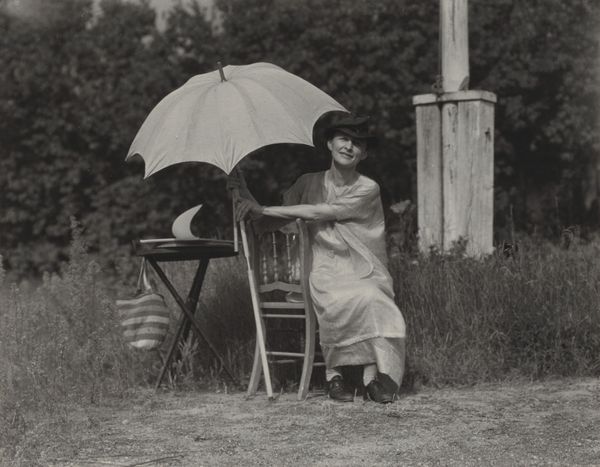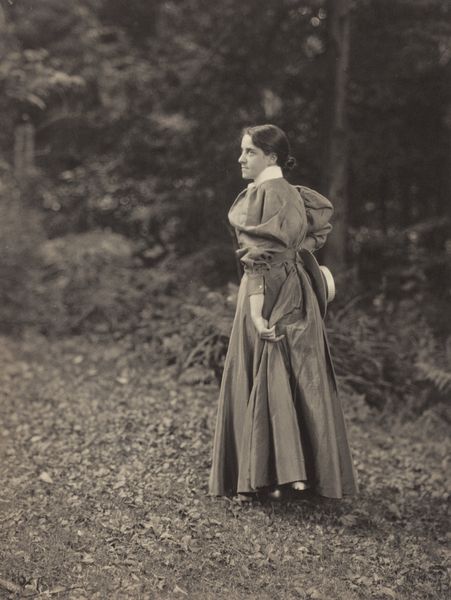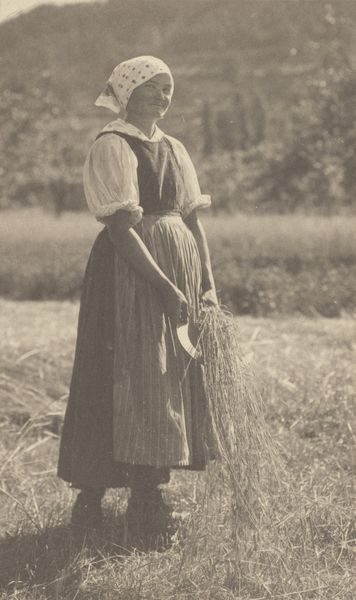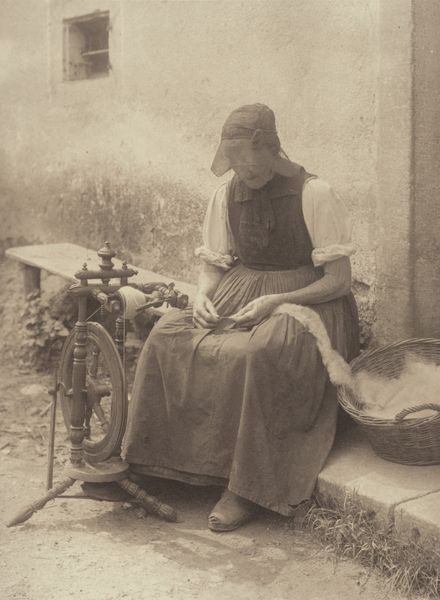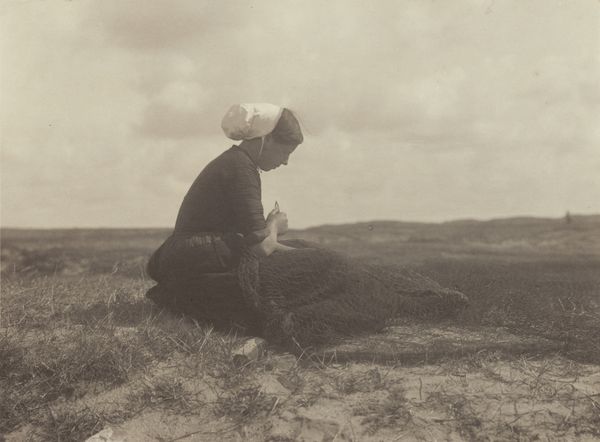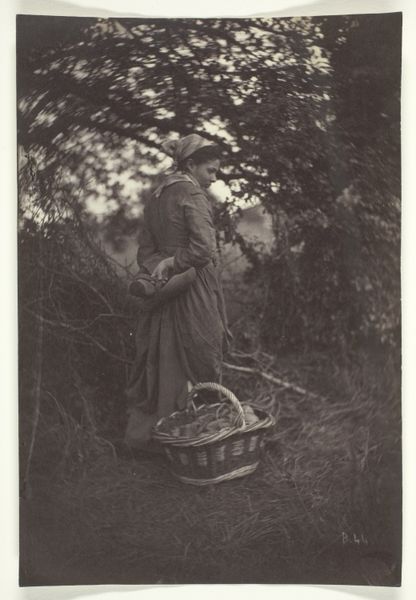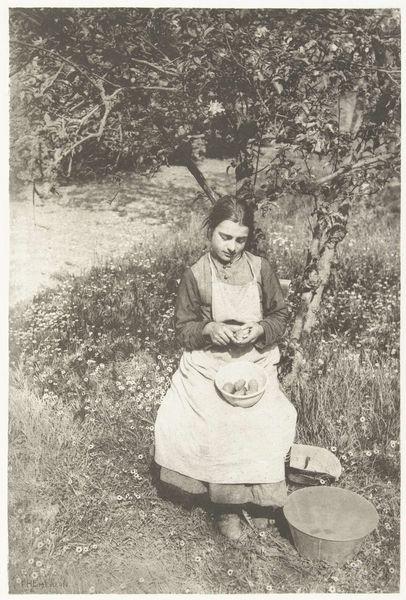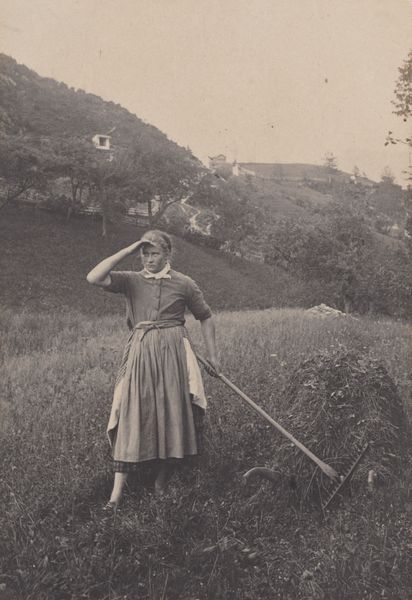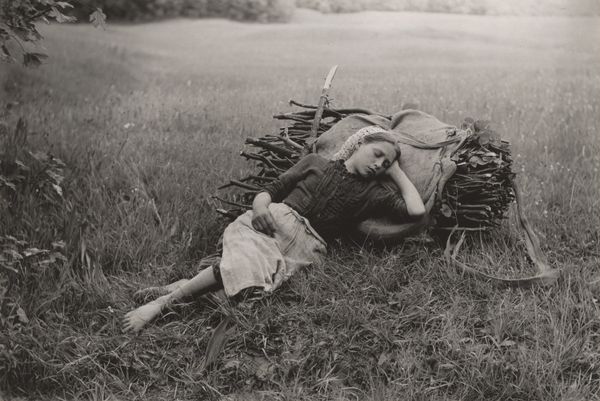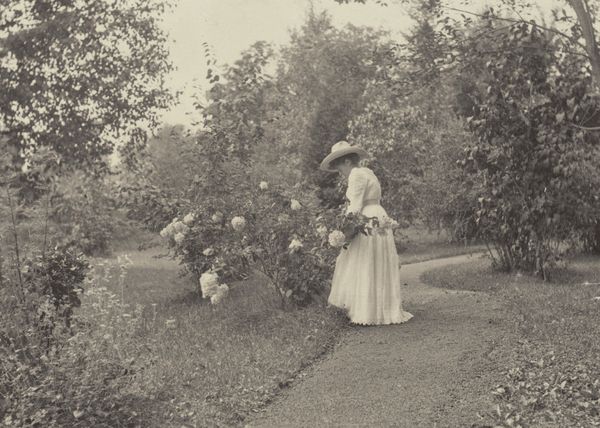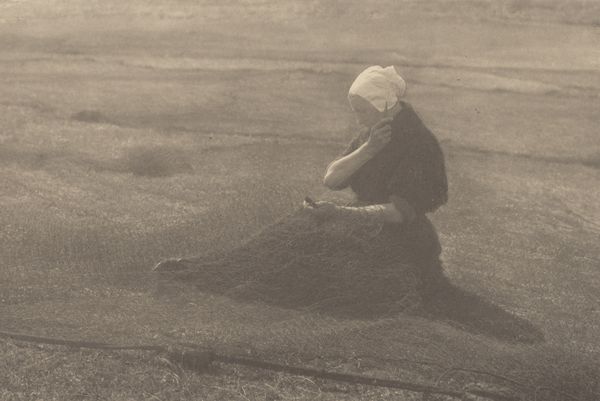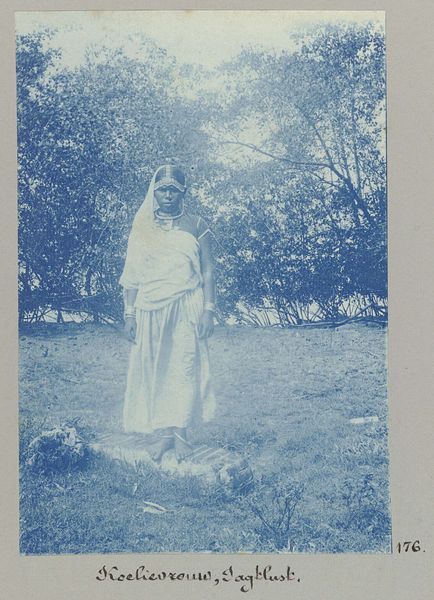
Dimensions: sheet (trimmed to image): 19.3 × 15.4 cm (7 5/8 × 6 1/16 in.) page size: 34.8 × 27.3 cm (13 11/16 × 10 3/4 in.)
Copyright: National Gallery of Art: CC0 1.0
Curator: What a dreamy scene. Alfred Stieglitz captured this gelatin-silver print, titled "In Full Sunlight," sometime between 1890 and 1896. There’s a certain intimacy to it, wouldn't you agree? Editor: Yes, the overall tonality creates a subdued, wistful mood. The way the light filters through, softening the details... almost like a hazy memory. I’m immediately drawn to the textural contrast between the rough grass and the smooth fabric of her dress. Curator: Stieglitz was a leading figure in the Photo-Secession movement, advocating for photography as a fine art. This piece showcases pictorialism's influence, with its emphasis on aesthetic beauty over purely documentary realism. Think of the deliberate blurring and soft focus – strategies for artistic expression. Editor: It’s interesting how he frames her; almost like a Madonna figure, if you notice how the headscarf echoes the classical drapery in religious paintings of that period. Consider the setting. She's grounded, seated in nature, connecting her to broader discussions of rural life in art around the turn of the century. Was he romanticizing her world? Curator: Certainly, pictorialists often aimed to elevate everyday subjects. But, returning to the formal elements, observe the composition: the diagonal of the hillside, the subtle gradations of light and shadow creating depth. Stieglitz carefully orchestrates these elements to achieve a specific emotional resonance. Notice her lowered gaze—her hands weaving some unidentifiable arrangement. Editor: And her bare feet! Such a deliberate move, right? Suggesting a certain liberation or intimacy with the landscape, which may speak to a growing sense of autonomy for women at that time, breaking from formal societal roles. She becomes one with her environment, while seemingly engaging in personal introspection. Curator: I concur. We shouldn't neglect the power of its materiality. Gelatin silver prints possess a distinctive luminosity. This creates an aesthetic impact that perfectly complements the idyllic quality of the scene. The grayscale provides a subdued timeless quality. Editor: Absolutely. What's captivating for me is how this single image serves as a time capsule—prompting reflections about gender, class, art history and the role images play in defining perceptions across generations. Curator: Agreed. Reflecting on it, I notice how the artfully composed formalism, rather than solely the image itself, establishes an emotional relationship between the depicted subject and the viewer. Editor: Yes, that liminal space – the suggestion of intimacy alongside that visual harmony – is what I’ll carry away from this work.
Comments
No comments
Be the first to comment and join the conversation on the ultimate creative platform.
